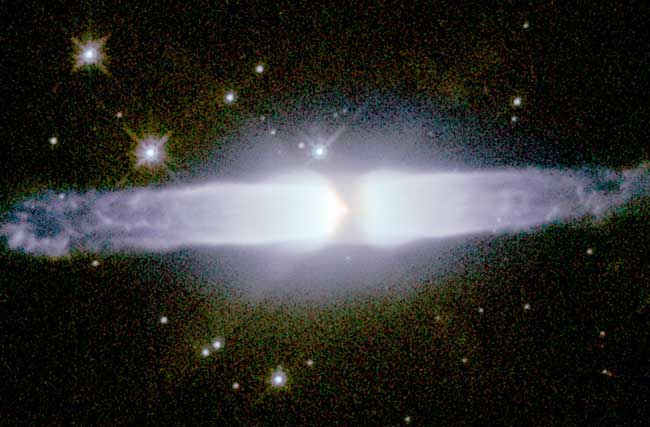Explanation: How do dying stars eject their outer layers? Stars that create elegant planetary nebulas like Henize 3-401, pictured above, are not unusual, causing speculation that, one day, our own Sun may look like this. Henize 3-401 is one of the most elongated planetary nebulas yet discovered, a particularly odd feat for a seemingly round star. Perhaps, some astronomers hypothesize, the elongated shape gives a clue to the expulsion mechanism. Genesis hypotheses include that the outer layers of gas are funneled out by the star's own magnetic field, and that a second unseen star is somehow involved. After the gas disperses in a few thousand years, only a white dwarf star will remain. Henize 3-401 lies about 10,000 light years away toward the constellation of Carina.
1999 2000 2001 2002 2003 2004 2005 2006 2007 2008 2009 2010 2011 2012 2013 2014 2015 2016 2017 2018 2019 2020 2021 2022 2023 2024 2025 |
Yanvar' Fevral' Mart Aprel' Mai Iyun' Iyul' Avgust Sentyabr' Oktyabr' Noyabr' Dekabr' |
NASA Web Site Statements, Warnings, and Disclaimers
NASA Official: Jay Norris. Specific rights apply.
A service of: LHEA at NASA / GSFC
& Michigan Tech. U.
|
Publikacii s klyuchevymi slovami:
planetary nebula - Planetarnaya tumannost'
Publikacii so slovami: planetary nebula - Planetarnaya tumannost' | |
Sm. takzhe:
Vse publikacii na tu zhe temu >> | |
